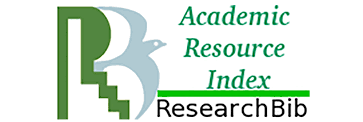Netizen Aggressiveness Against Religious Content and Diversity on Facebook Media
Abstract
This research wants to analyze the forms of aggression carried out by netizens on social media in the form of videos, pictures, and memes containing blasphemy bringing the name of God, prophets, and religion, ethnicity, and class related to the blasphemy case committed by Basuki Cahaya Purnama (Ahok). This type of research is descriptive qualitative, the data collection method uses interviews with several netizens and discourse analysis related to content on social media. Based on the results of the research, it was found that there was content in videos, images, and memes that contained aggression directed at Ahok and his supporters and vice versa in the name of religion, ethnicity, and class. Aggressive behavior among netizens is due to the characteristics of social media which allow one to channel emotions safely and instantly because there is no need to meet face to face and eliminate the pressures caused by face to face communication. The most sensitive issues to be used as fuel that is very effective in carrying out aggression on social media are issues related to religion and ethnic and ethnic differences. improve online media literacy skills among netizens who use social media, through formal education and non-formal forums and support from various parties. This research is expected to contribute to minimizing polarization in society due to differences in religion and culture, especially ahead of the 2024 election.
Downloads
References
Apriliawati, Denisa. Agresi di Media Sosial Facebook Ditinjau dari Konformitas dan Regulasi Diri. Skripsi pada program studi Psikologi Fakultas Ilmu Sosial dan Humaniora UIN Sunan Kaliaga Yogyakarta, 2015.
Arnus, S.H. Self Disclosure i Media Sosial pada Mahasiswa IAIN Kendari (Suatu Kajian Psikologi Komunikasi Pada Pengguna Media Sosial). Al-Izzah: Jurnal Hasil-Hasil Penelitian, 11 No.2 (Mei 2016) 143–160.
Ardianto, Elvinaro dan Komala, Lukita Erdinaya. Komunikasi Massa: Suatu Pengantar. Bandung: PT. Remaja Rosdakara, 2004.
Berger, Charles R, Michael E Roloff, dan dkk. Handbook Ilmu Komunikasi. Bandung: Penerbit Nusa Media, 2014.
Budianto, Heri, dan Farid Hamid. Ilmu Komunikasi: Sekarang dan Tantangan Masa Depan. Jakarta: Kencana Prenadamedia Group, 2013.
Cangara, Hafied, Pengantar Ilmu Komunikasi. Ed.2. Jakarta: PT.Rajawali Pers, 2016.
Kurniawati, Fitria Dwi. Pola-Pola Perilaku Agresi di Situs Jejaring Sosial Facebook pada Mahasiswa Universitas Negeri Malang. Malang: Skripsi Jurusan Psikology Universitas Negeri Malang, 2012.
Kurniawati, Juliana, dan Siti Baroroh. “Literasi Media Digital Mahasiswa Universitas Muhammadiyah Bengkulu.” Jurnal Komunikator 8 No.2 (November, 2016).
Liliweri, Alo. Komunikasi Serba Ada Serba Makna. Jakarta: Kencana Prenada Media Group, 2011.
Mantri, Y. M. “Kasus Penistaan Agama pada Berbagai Era dan Media di Indonesia.” Definisi: Jurnal Agama dan Sosial Humaniora 1 (Maret 2002): 123–138.
Mc. Luhan, Mashall. Understanding Media: Extension if Man . USA: S Signet Book ,1968.
Nasution, Zulkaimen, Perkembangan Teknologi Komunikasi. Jakarta: Universitas Terbuka, 2010.
nindya kartika putri http://nindyapoetri.blogspot.com/2010/06/internet-sebagai-computer-mediated.html
Nurudin. Sistem Komunikasi Indonesia. Jakarta: PT.Raja Grafindo Persada, 2008.
_______. Pengantar Komunikasi Massa. Jakarta: PT. Raja Grafindo Persada, 2008.
Poerwaningtias, Intania, dan dkk. Model-Model Gerakan Literasi Media Dan Pemantauan Media Di Indonesia. Yogyakarta: PKBP, 2013.
Poerwandari, Rubrik psikologi Kompas sabtu 29 Juli 2017 hal. 25
Severin, J. Werner dan Tankard, W. James. Teori Komunikasi, Sejarah, Metode, dan Terapan di dalam Media Massa, Edisi Kelima. Jakarta: Kencana Prenada Media Group, 2013.
Tamburaka, Apriadi. Literasi Media, Cerdas Bermedia Khalayak Media Massa. Jakarta: Rajawali Pers, 2013.
Tamburaka, Apriadi.Literasi Media, Cerdas bermedia khalayak media massa.Jakarta: Rajawali Pers, 2013.
Vivian, John. 2008. Teori komunikasi Massa, Edisi Kedelapan. Jakarta: Kencana Prenada Media Group ,2008.
www.Iqbalnurhadi.com, diakses tanggal 22 Juli 2017
www.kompasiana.com diakses tanggal 18 Juni 2017
Copyright (c) 2022 Proceedings of International Conference on Da'wa and Communication

This work is licensed under a Creative Commons Attribution 4.0 International License.
![]()
Author(s) who publish with this proceeding agree to the following terms:
Author(s) retain copyright and grant the journal right of first publication with the work simultaneously licensed under a Creative Commons Attribution License that allows others to share the work with an acknowledgement of the work's authorship and initial publication in this proceeding.
Author(s) are able to enter into separate, additional contractual arrangements for the non-exclusive distribution of the journal's published version of the work (e.g., post it to an institutional repository or publish it in a book), with an acknowledgement of its initial publication in this proceeding.
Author(s) are permitted and encouraged to post their work online (e.g., in institutional repositories or on their website) prior to and during the submission process, as it can lead to productive exchanges, as well as earlier and greater citation of published work (See the Effect of Open Access).
The Proceedings of International Conference on Da’wa and Communication by the Da’wa and Communication Faculty of the Sunan Ampel State Islamic University Surabaya, Indonesia is licensed under a Creative Commons Attribution-ShareAlike 4.0 International License.





























